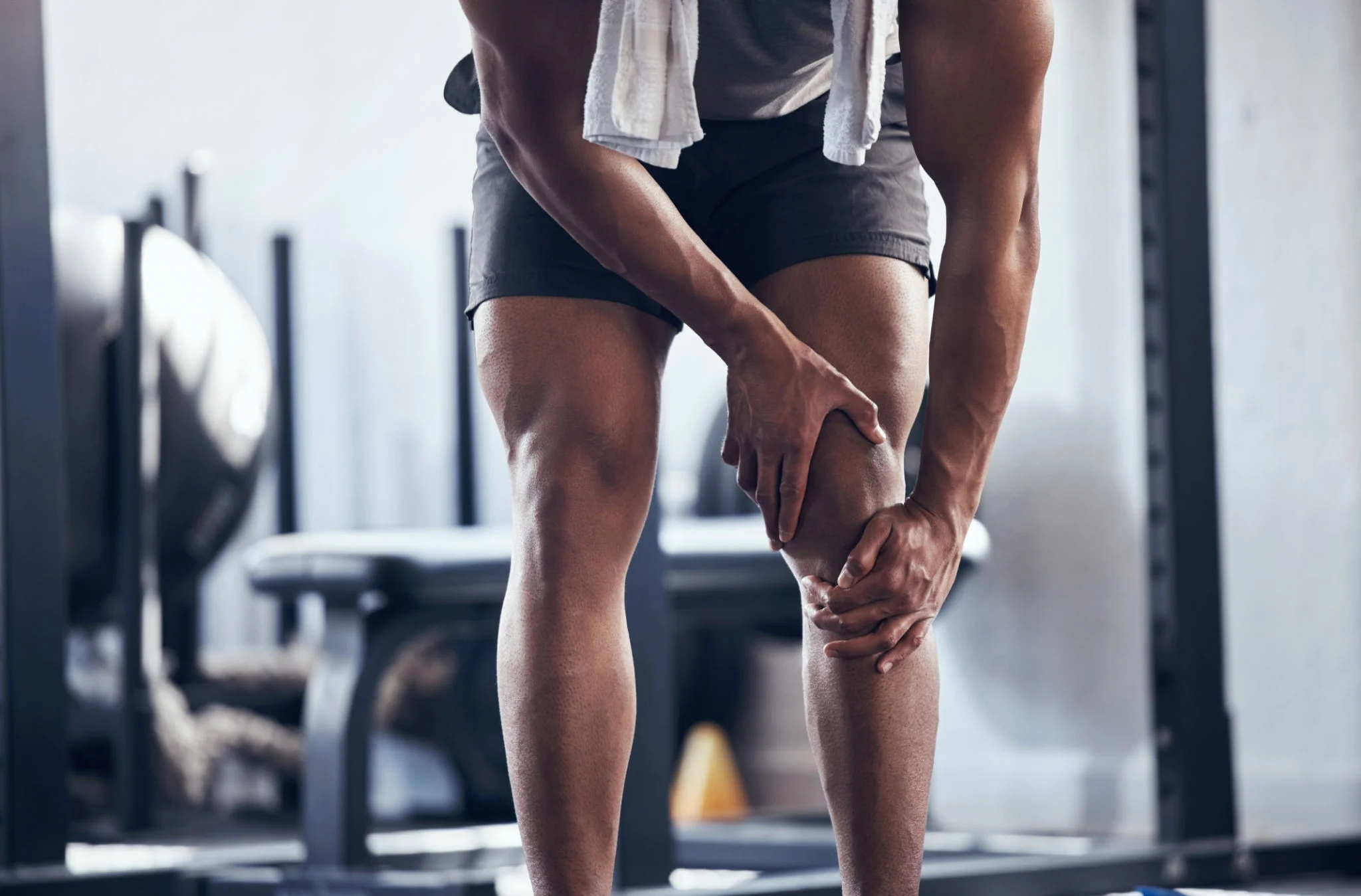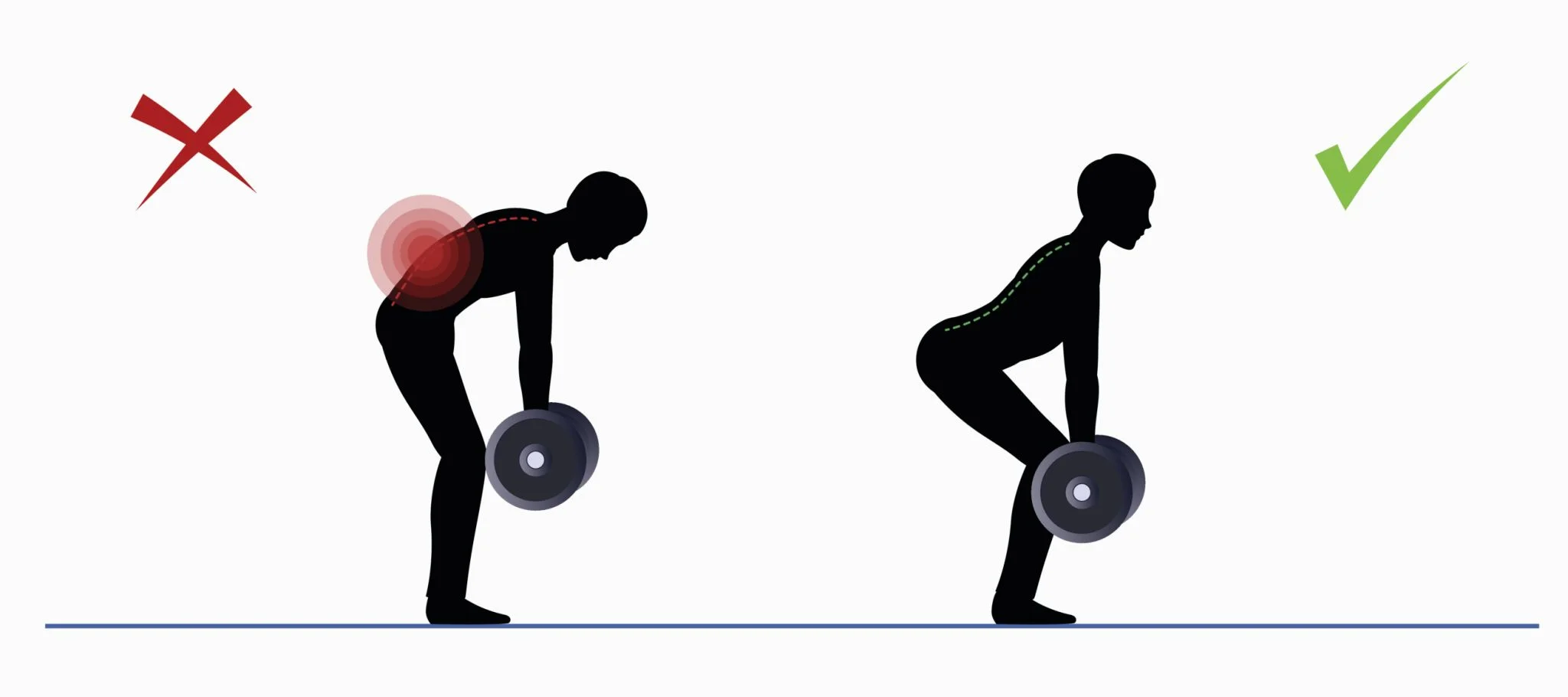Squats are a fundamental exercise in many fitness routines, known for building strength in the lower body and core. However, improper squatting techniques can lead to knee pain and long-term injuries. This article explores common squatting mistakes that may cause knee pain and provides tips on how to squat correctly to avoid discomfort and injury.
Key Takeaways
- Knee Alignment: Keep your knees aligned with your toes throughout the squat to prevent inward collapse and reduce knee stress.
- Proper Depth: Aim for thighs parallel to the ground or slightly below, ensuring control and form to avoid excessive knee strain.
- Weight Distribution: Sit back into the squat, keeping your weight evenly distributed across your feet, emphasizing the heels to prevent knees from moving forward.
- Neutral Spine: Maintain a straight back by engaging your core and lifting your chest to avoid rounding the lower back.
- Correct Foot Placement: Position your feet shoulder-width apart with toes slightly pointed outward for stable knee alignment.
- Warm-Up and Mobility: Always perform dynamic stretches and mobility exercises before squatting to prepare muscles and joints, reducing injury risk.
- Appropriate Weight: To prevent undue stress on the knees, use manageable weights and focus on form before gradually increasing the load.
Understanding the Importance of Proper Squatting Technique
Proper squatting technique is crucial for maximizing the benefits of the exercise while minimizing the risk of injury. When done correctly, squats can enhance muscle strength, improve flexibility, and support joint health. Conversely, poor form can place undue stress on the knees, leading to pain and potential damage.
Common Squatting Mistakes
Mistake 1: Letting the Knees Collapse Inward
One of the most common squatting mistakes is allowing the knees to collapse inward, known as knee valgus. This error places excessive stress on the knee joints and ligaments, increasing the risk of pain and injury.
How to Avoid: Focus on aligning your knees with your toes throughout the movement. Engage your glutes and thighs to maintain proper alignment. Using a resistance band around your thighs can also help reinforce correct knee positioning.
Mistake 2: Squatting Too Deep or Not Deep Enough
Both squatting too deep and not deep enough can contribute to knee pain. Squatting too deep, especially without adequate flexibility or strength, can strain the knee joints. Conversely, partial squats can lead to muscle imbalances and place extra load on the knees.
How to Avoid: Aim to squat until your thighs are parallel to the ground or slightly below, ensuring you maintain control and proper form. Adjust your depth based on your flexibility and strength levels, and gradually work towards deeper squats as your abilities improve.
Mistake 3: Allowing the Knees to Move Forward
When squatting, allowing your knees to move excessively forward beyond your toes can increase pressure on the knee joints. This mistake often occurs due to improper weight distribution, leading to pain over time.
How to Avoid: Focus on sitting back into the squat like sitting in a chair. Keep your weight evenly distributed across your feet, with a slight emphasis on your heels. This technique helps keep your knees behind your toes and reduces knee stress.
Mistake 4: Rounding the Lower Back
Rounding the lower back during a squat can compromise your spine’s alignment and place additional stress on your knees. This error often results from a lack of core strength or flexibility.
How to Avoid: Engage your core muscles to maintain a neutral spine throughout the squat. Keep your chest lifted and your back straight. Practicing squats with a dowel or stick along your spine can help you maintain proper alignment.
Mistake 5: Using Incorrect Foot Placement
Incorrect foot placement can disrupt your squatting mechanics and lead to knee pain. Placing your feet too close together or too far apart can affect your balance and knee alignment.
How to Avoid: Position your feet shoulder-width apart with your toes slightly pointed outwards. This stance provides a stable base and helps align your knees with your toes. Experiment with minor adjustments to find the most comfortable and effective foot placement for your body.
Mistake 6: Neglecting Warm-Up and Mobility Work
Skipping warm-ups and mobility exercises can make your muscles and joints more susceptible to injury. Cold, stiff muscles cannot support during squats.
How to Avoid: Always start your workout with a proper warm-up, including dynamic stretches and mobility exercises. Focus on hip flexors, hamstrings, and ankle mobility to enhance your squatting form and reduce knee stress.
Mistake 7: Using Too Much Weight
Excessive weight lifting without proper form can lead to knee pain and injury. Lifting heavy weights with incorrect technique strains your knees and other joints.
How to Avoid: Prioritize mastering your squatting form before adding heavy weights. Gradually increase the load as your technique and strength improve. Consider working with a trainer to ensure you use appropriate weights and maintain proper form.
Tips for Correct Squatting Technique
Engage Your Core
Engaging your core muscles is essential for maintaining proper alignment and stability during squats. A strong core helps protect your spine and reduces stress on your knees.
How to Implement: Tighten your abdominal muscles and maintain this engagement throughout the squat. This practice helps keep your torso upright and supports your lower back.
Focus on the Hip Hinge
The hip hinge movement is crucial for proper squatting technique. This movement pattern ensures that you use your hips and glutes effectively, reducing the load on your knees.
How to Implement: Initiate the squat by pushing your hips back as if you were closing a car door with your butt. This action helps you maintain a neutral spine and shifts the emphasis to your posterior chain muscles.
Keep Your Knees Aligned
Maintaining proper knee alignment throughout the squat prevents knee pain and injury.
How to Implement: Ensure that your knees track over your toes during the squat. Avoid letting your knees collapse inward or bow outward. Visualize your knees moving in a straight line as you lower and lift your body.
Control Your Descent and Ascent
Controlling the speed of your squat is essential for maintaining proper form and reducing knee stress.
How to Implement: Lower your body slowly and with control, taking 2-3 seconds to reach the bottom of the squat. Similarly, rise back up with a controlled pace, focusing on using your thigh and glute muscles to lift.
Use Proper Footwear
Wearing the right footwear can significantly impact your squatting form and reduce the risk of knee pain.
How to Implement: Choose shoes with a flat, stable sole that provides good grip and support. Avoid shoes with excessive cushioning or elevated heels, as they can affect your balance and alignment.
Conclusion
Squatting is excellent for building lower body strength and improving overall fitness. However, improper technique can lead to knee pain and long-term injuries. By understanding common squatting mistakes and implementing the correct form, you can enjoy the benefits of squatting while minimizing the risk of discomfort and damage to your knees. Prioritize proper alignment, engage your core, and practice with controlled movements to ensure safe and effective squatting. Whether you’re a beginner or an experienced lifter, focusing on technique and consistency will help you achieve your fitness goals while protecting your knee health.
FAQs
What are some common squatting mistakes that can cause knee pain?
Common squatting mistakes that can lead to knee pain include:
- Knee Caving: Allowing the knees to collapse inward during the squat puts excessive strain on the knee joints.
- Forward Knee Travel: Letting the knees move too far forward past the toes increases stress on the patellar tendons.
- Insufficient Hip Hinge: Not engaging the hips properly and relying too much on the knees can lead to improper weight distribution.
- Shallow Squats: Not squatting deep enough can prevent proper engagement of the glutes and hamstrings, leading to over-reliance on the knees.
- Improper Foot Positioning: Placing the feet too close together or too far apart leads to imbalance and uneven stress on the knees.
- Lack of Core Engagement: Failing to engage the core muscles can cause instability and improper form, which can affect the knees.
How can I ensure proper knee alignment during squats?
To ensure proper knee alignment during squats:
- Track Knees Over Toes: Throughout the movement, focus on keeping your knees aligned with your toes. Avoid letting them collapse inward or splay outward.
- Proper Stance: Position your feet shoulder-width apart or slightly wider, with toes pointing slightly outward.
- Engage Hips and Glutes: Initiate the squat by pushing your hips back and engaging your glutes. This helps distribute the weight more evenly and reduces knee strain.
- Maintain an Upright Torso: Keep your chest up and back straight to maintain a balanced posture and proper knee alignment.
- Use a Mirror: Perform squats before a mirror to visually check your knee alignment and adjust as needed.
What role does ankle mobility play in preventing knee pain during squats?
Ankle mobility is crucial for proper squat form and preventing knee pain:
- Improved Range of Motion: Good ankle mobility allows for a deeper squat and better knee alignment, reducing strain on the knees.
- Balanced Weight Distribution: With adequate ankle mobility, you can maintain proper balance and weight distribution, preventing excessive forward knee travel.
- Prevents Compensation: Limited ankle mobility can cause the body to compensate by shifting stress to the knees or lower back, leading to pain and injury.
How can I improve my ankle mobility for better squats?
To improve ankle mobility for better squats:
- Ankle Stretching: Perform stretches targeting the calf muscles and Achilles tendon, such as calf raises and wall stretches.
- Dynamic Warm-Up: Include dynamic movements like ankle circles, toe raises, and heel walks in your warm-up routine.
- Foam Rolling: Use a foam roller on the calves and shins to release tightness and improve flexibility.
- Elevated Heel Squats: To gradually improve ankle flexibility, practice squats with your heels elevated on a small platform or weight plate.
What are some tips for avoiding knee pain while squatting?
To avoid knee pain while squatting:
- Warm-Up Properly: Always warm up with dynamic stretches and mobility exercises to prepare your muscles and joints.
- Use Proper Footwear: Wear supportive shoes with a stable base to maintain proper alignment and balance.
- Control Your Descent: Lower yourself into the squat slowly and with control to avoid excessive stress on the knees.
- Avoid Excessive Weight: Start with lighter weights and gradually increase as your form and strength improve.
- Listen to Your Body: Pay attention to any discomfort or pain and adjust your form or reduce the intensity as needed.
- Seek Professional Guidance: Consider working with a personal trainer or physical therapist to ensure proper technique and form.
By understanding and avoiding these common squatting mistakes, you can protect your knees and improve your overall squat performance. Proper technique, mobility, and strength training are key to preventing knee pain and ensuring safe and effective workouts.



